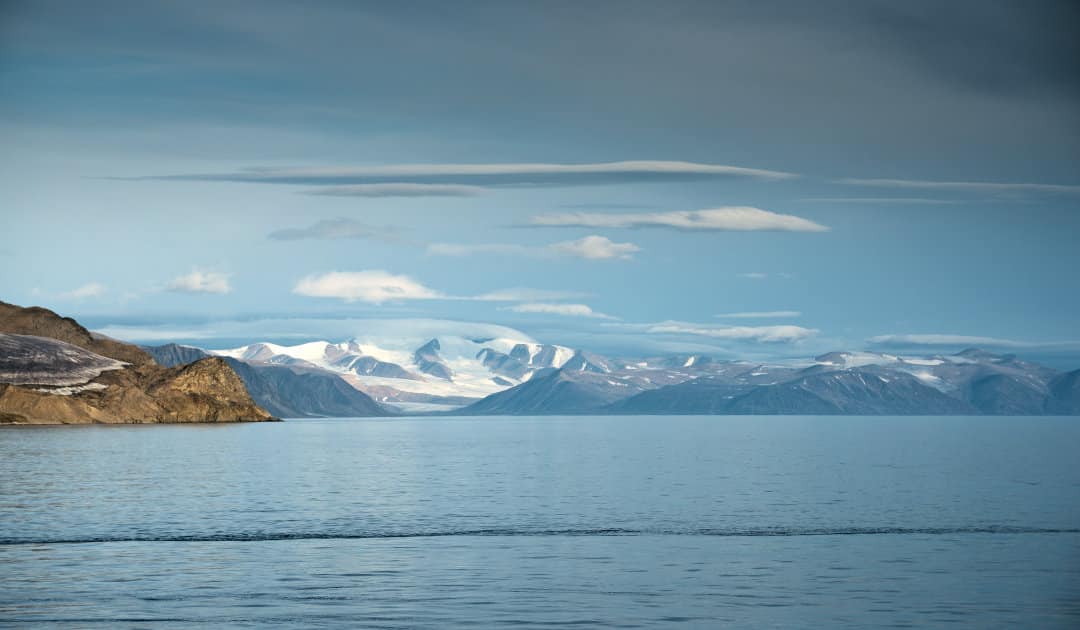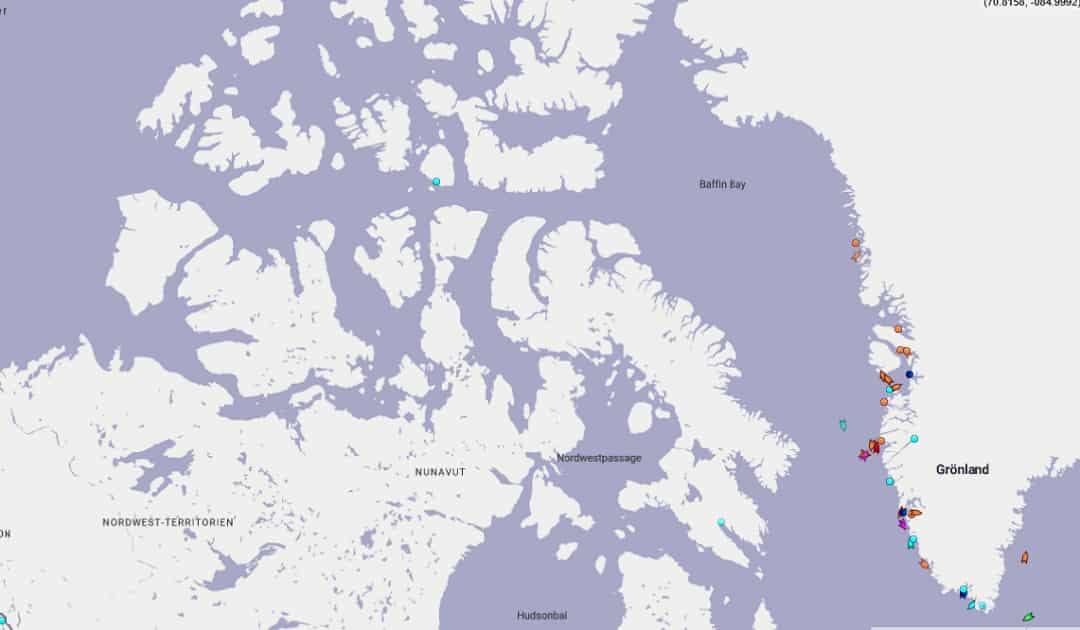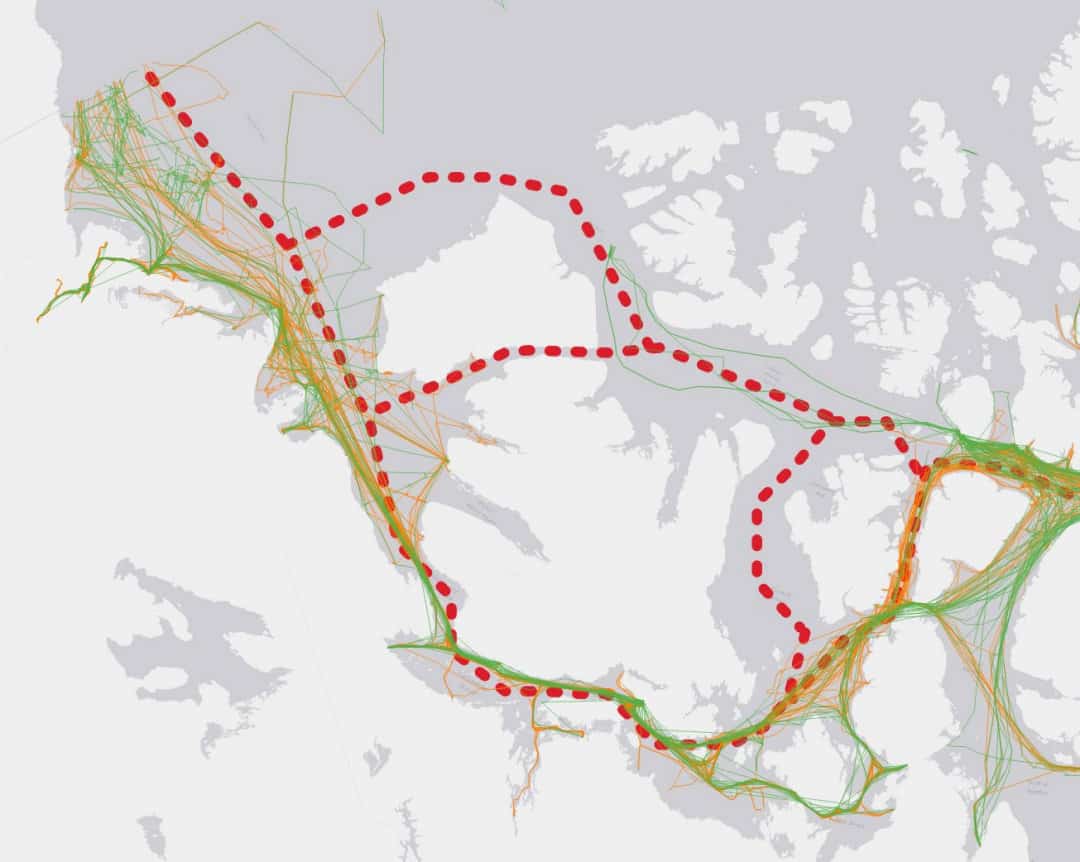
Shipping is the driver of the global economy. Most of the goods shipped worldwide are transported by ship. The importance of efficient and safe routes has been demonstrated by the closure of the Suez Canal a few weeks ago. Routes through Arctic waters have also become increasingly popular. Russia has been able to massively increase the share of goods transported along the Northeast Passage in recent years. But the Northwest Passage along the Canadian coast has also gained considerable momentum.
Between 2013 and 2019, 44 percent more ships traveling about 107 percent more distance in the Northwest Passage have been recorded. These figures were presented to the media the day before yesterday by the Arctic Council’s Working Group on the Protection of the Arctic Marine Environment (PAME). In addition to the number of vessels and their route, the size of registered vessels also increased: in 2013, just ten vessels with a tonnage of between 25,000 – 49,000 tonnes passed through the waterway; in 2019, there were 48, making it the largest group of vessels. Overall, only the second smallest tonnage group showed a decline, all other groups showed growth rates of up to 380 percent.

Differences are also apparent in the types of ships that have sailed through the Northwest Passage. While in 2013 it was mainly fishing vessels, container and other cargo ships, the number of the former decreased by 35 percent, while the other two types increased from 18 to 48 ships, and from 15 to 25 respectively in the six years. The number of cruise ships that had passed through the passage at least once also increased, but nowhere near as much as the cargo ships. On the one hand, an examination of the flag states shows unsurprisingly that Canada has sent by far the most ships along the route. Flags of convenience countries such as the Marshall Islands and Panama follow in the places behind. Interestingly, the number of Dutch-flagged vessels, as the first non-convenience country, has also risen sharply.
The Working Group’s report shows very clearly that, of the six possible routes through the Northwest Passage, ships concentrate mainly on the routes close to the coast. On the one hand, this may have to do with the size of the ships, as smaller draughts are also possible on the routes. But at the same time, these routes are also more difficult to navigate, as many areas have shoals and other navigational obstacles. In addition, marine mammals such as belugas are more likely to hunt and mate in the coastal areas. In addition, due to the difficult passages, there is the danger of accidents with shoals, rocks and also ice chunks. Because the passage is indeed passable more often due to global warming. Nevertheless, chunks of ice drift in the shipping channels time and again, posing a threat to non-ice-strengthened ships. Due to the remoteness of the region, accidents would have dramatic consequences for the sensitive Arctic system.

For the villages along the Northwest Passage, ships are the only means of transport apart from aircraft. In addition to the goods that are brought, they also transport raw materials south for further processing. In addition, the arriving ships are a source of revenue, be it in the form of fees, supplies and visitors. Therefore, smaller vessels such as yachts and small passenger ships are also welcome in the places. Their numbers have increased since 2013, at least through 2019, according to PAME. Because since the beginning of the COVID pandemic, the Northwest Passage has been de facto closed. A few special ships and tugs are still in the region. But basically the passage is like Roald Amundsen once found it in 1906: wide, wild… and empty. However, this should only last until the end of the pandemic. After that, this waterway, whose exploration had cost so many lives, will probably pick up speed again.
Dr Michael Wenger, PolarJournal
Link to the report: PAME – Arctic Shipping Status Report #3
More on the subject:







